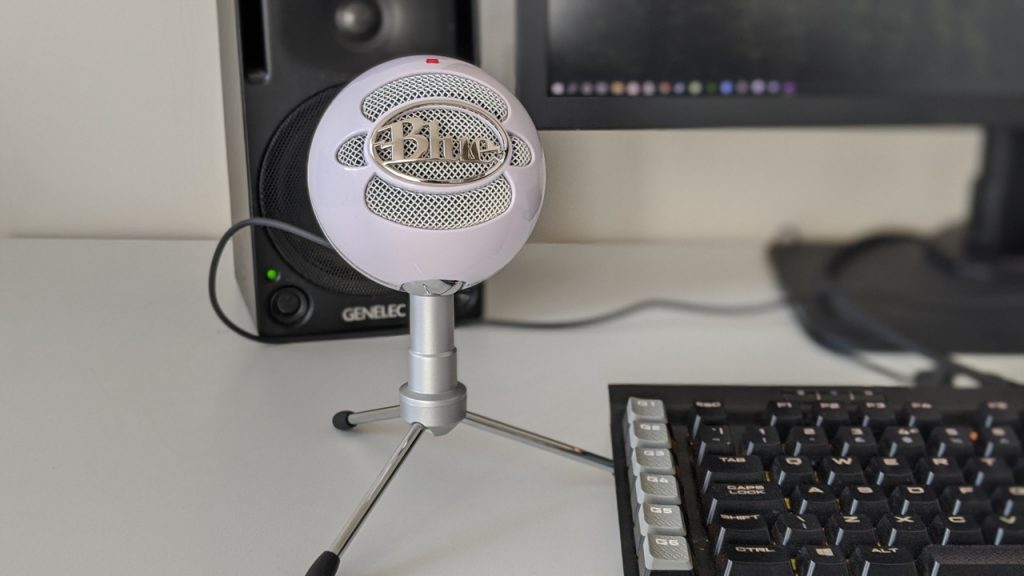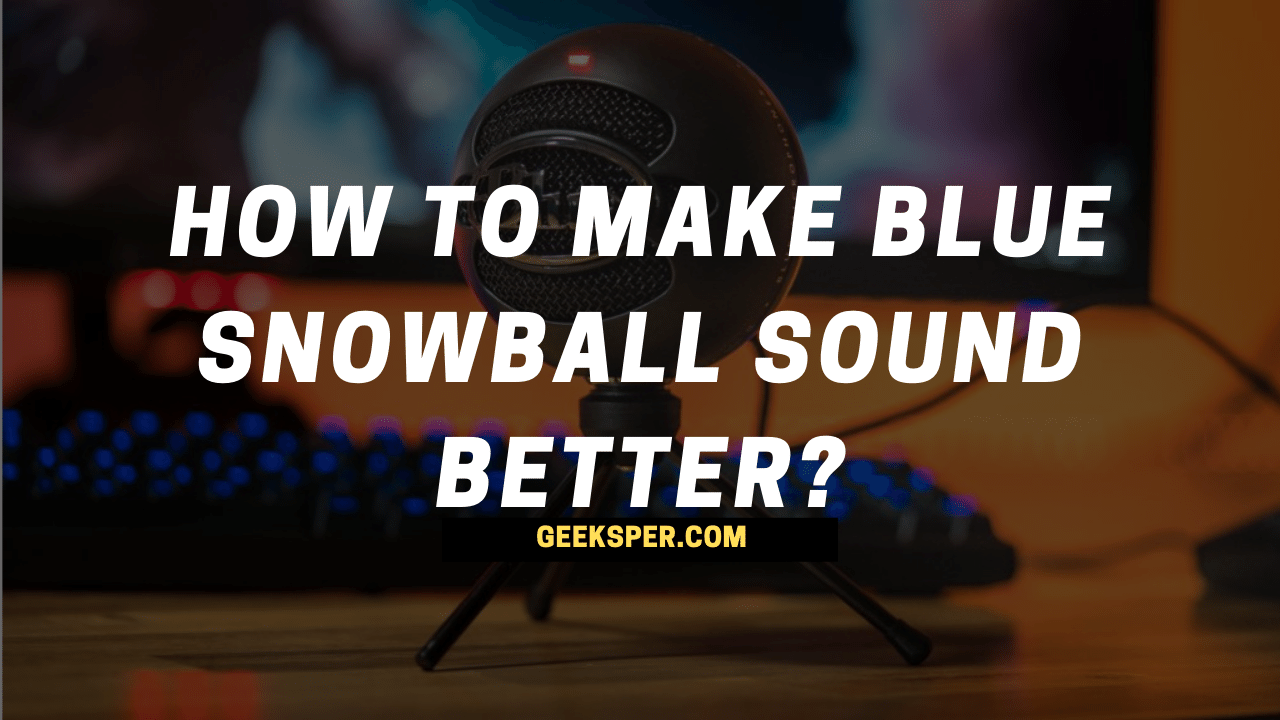Tired of the static and bad sound quality that your Snowball microphone has produced? The Blue Snowball is a great USB mic for recording vocals, instruments, podcasting, voiceovers, interviews, etc.
But if you are not satisfied with its sound quality, there are a few things you can do to make it sound better. This article will teach you How to Make Blue Snowball Sound Better?
Blue Snowball microphones
You see, the Snowball is a decent mic on its own. It performs very well for the price of this mic, and it has a lot of great features that make your recording experience better.
Also, This Mic is a plug-and-play device. You can plug it into your computer and start recording right away; no drivers are necessary.
‘Blue Snowball’, But What If It Doesn’t Sound Like One?

However, not every Snowball mic is the same. Though they have identical specifications on paper, the sound quality varies across different units for many reasons.
The two most common problems reported by users are:
1. The sound is “hollow” sounding, lacking in bass.
2. There is a lot of popping because the mic picks up every little puff of breath that hits it.
How to Solve Blue Snowball Sound Problem?
These two issues can be solved with simple remedies without spending a lot of money or buying a whole new mic.
- The first step is to look at the bottom of your mic and identify if it has a “bass-reduction switch”.
- If you can find one, make sure that it’s set to “off” position. If the switch has been activated by mistake, turn it off to resolve this issue.
- Alternatively, you can reduce the bass from your computer. Then go to your Control Panel and open up “Sound”. Then select the “Recording” tab and choose the option of “Mic Boost Preventive”.
- Once you have done this, you can also adjust the Mic Volume by moving the slider on the bottom right corner of the window.
How to avoid popping noises in Blue Snowball Microphone?
Make sure to turn the mic away from your mouth when breathing or making noises. This will prevent that little puff of breath from hitting the mic and causing it to record extra sounds.
As simple as these steps are, they can efficiently resolve 90% of Snowball’s sound issues.
How to Make Blue Snowball Sound Better
Setting Up the Blue Snowball Microphone
Setting up the Blue Snowball receiver isn’t precarious. As referenced above, it is a fitting and-play gadget that you can rapidly snare to your PC utilizing a USB link. Even an unpracticed client of this mic can instantly set it up.
Setup Initial Settings on Blue Snowball
You’ll need to guarantee that the USB link is stopped immovably into the Blue Snowball amplifier at the beginning. Then, at that point, plug the USB lines opposite end into your PC USB port. You will see a red light on the amplifier’s top as you snare the mic to the PC.
Selecting a Setting on the Blue Snowball Microphone
Without a doubt, you can utilize this mic on any PC as it’s a “plug and play” device. First, connect the USB link to your computer and open up a discussion window. This brings about an auto-installation of the accessible drivers for this mic on your PC. From that point onward, you can utilize the Blue Snowball as an intuitive mic.
Upgrade Your Snowball Microphone Setups
You can do this by going to the entire mouthpiece menu to observe the Filters box choice. Close to Filters is the gear-tooth button. Snap-on that to open up another menu. At last, click on the, in addition, to sign to add the channels. You can likewise add a Noise Gate channel to develop sound quality further.
The Noise Gate will tell your mic to stop when you don’t talk, and it will just get sounds once you talk. Like this, you can forestall the mic from getting encompassing sounds. It can likewise prevent the mic from catching, and recording sounds beneath the predefined decibel level.
Add a Shock Mount to Your Mic
The Blue Snowball, as of now, comes with a detachable base where you can swap out the round plastic or rubber circle with an elastic top. You’ll likewise need to purchase a shock mount to keep the mic from making clatters and knocks while you’re utilizing it. This will enhance sound quality directly.
The Snowball accompanies an attractive turn mount that you can see at the mic body base focus. You can guarantee that the mic is mounted on the work area stand to ensure sturdily upheld. Assuming you need to decrease the low-recurrence thunder, you can mount it on the Blue Ringer.
FAQs (Frequently Asked Questions)
Can you change Blue Snowball settings?
Under Start Menu open Control Panel then select Sound. Select Recording tab; ensure Blue Snowball is selected as Working with check mark next to the icon (Disable any alternate mic if necessary). Click on Properties; select the Levels tab, set your input level, click Apply, then OK.
How do you get rid of background noise on a Blue Snowball?
To reduce background noise on a Blue Snowball mic, you need to set your microphone by choosing between the CARDIOID or OMNI option. Then place a sound filter between the microphone and you. If it still picks up background noise after that, you will have to use noise-canceling plugins and software.
Why is my Blue Snowball so loud?
Your Blue Yeti is so loud because you may be using the wrong recording mode, have set the gain too high, or are recording in windy conditions without a wind muff. You can fix these issues by switching your mic to cardioid mode, lowering the gain, and purchasing a wind muff, respectively.
Conclusion
The Blue Snowball microphone is an extraordinary and straightforward to-work with sound and voice recording gadget. It can work as a first step for home studios and first-time sound specialists.
Its transportability makes it relatively fundamental at whatever point you need to convey your vocals or message to the world without spending too much money on gear!
I hope this article was helpful on How to Make Blue Snowball Sound Better.
Until then check out some of my other articles too:
How To Record Audio On iPhone?
How Do Megaphones Work With Mic?
What Is Vocal Booth? How To Build A Vocal Booth?
How to adjust microphone sensitivity
How To Use Soundpad on Discord
